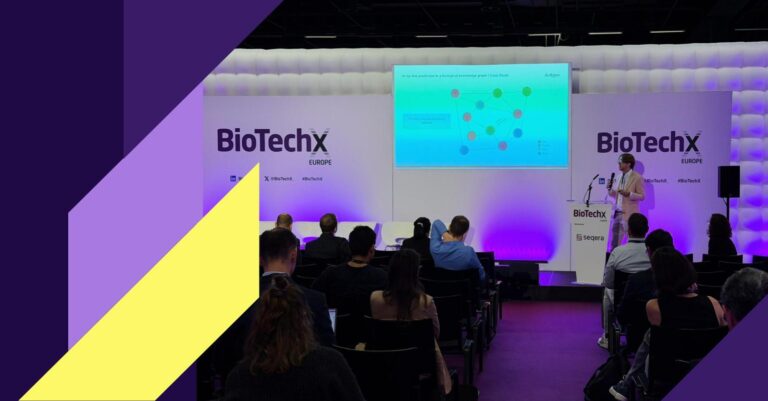Top market ‘AI in biotech’ stories
Here’s your latest installment of our selection of AI in biotech news.
In just 3 – 4 minutes, catch up on the innovations reshaping drug discovery and biomedical research. We are delivering fresh insights to your inbox on the second Tuesday of each month, so you can stay informed and inspired. Happy reading!
In today’s edition:
 100M molecule simulations go open-source
100M molecule simulations go open-source AI predicts cancer survival from a photo
AI predicts cancer survival from a photo FDA integrates AI into drug approvals
FDA integrates AI into drug approvals 70x improved antibody design with generative AI
70x improved antibody design with generative AI

Meta’s open quantum leap: 100M simulations for AI-driven discovery
Meta just released a 100 million molecular simulation dataset paired with an AI that runs 10,000x faster than traditional methods.
It covers small molecules, biomolecules, electrolytes, and metal complexes – systems up to 350 atoms, far beyond what typical DFT simulations can handle.
Why this matters:
This could supercharge discovery in drug development, energy, and materials science, making large-scale screening actually scalable.
What stands out:
– Massive scale: 100M+ simulations
– True performance leap: 10,000x faster
– Open-source: free access for researchers worldwide
source: semafor
FaceAge: predicting cancer outcomes from a selfie
A team from Mass General Brigham and Harvard Medical School built FaceAge – an AI that estimates biological age from a simple facial photo.
Why it matters:
Biological age is a strong predictor of survival in cancer care. In trials, FaceAge consistently outperformed clinicians in forecasting outcomes for patients in palliative care.
Key takeaways:
– 5 years older: Cancer patients’ biological age often exceeds their actual age
– AI wins: Outperforms doctors in short-term survival prediction
– Non-invasive: Works from standard photos – no scans, no labs
source: lancet
FDA Goes All-In on AI for Drug Reviews
The FDA is officially integrating AI into its drug and device review process by June 30, a first in regulatory history. This isn’t a trial. It’s happening.
Why this matters:
This could slash months from approval timelines and set a global precedent for regulatory modernization.
What changes:
– Fewer delays: AI flags errors and gaps earlier in the process
– Better focus: Human reviewers spend more time on clinical relevance
– Global ripple effect: Other agencies are watching
source: forbes
Nabla Bio’s JAM Model: 70x Boost in Antibody Design
Nabla Bio unveiled a generative AI model called JAM (Joint Atomic Modeling) – trained to iteratively design and refine antibodies for tough targets like GPCRs.
Why it matters:
These receptors have long resisted biologics. JAM not only cracked the code. Itt did so 70x better than traditional methods.
Breakthroughs include:
– Sub-nanomolar antibodies against CXCR4 and CXCR7
– The first known antibody activators of CXCR7
– Scalable design hundreds of candidates without retraining
source: nabla.bio




